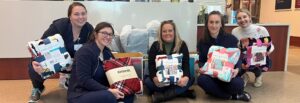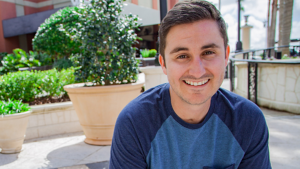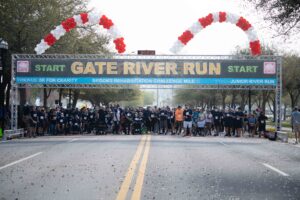Albert Keaton’s Fight to Recovery

Back to physical health resource hub
Albert Keaton was playing in a church softball tournament. As he threw the ball from right field, he felt a severe pain in his lower back that radiated down his right leg. He tried to ignore it at first, but the pain got progressively worse. He called his primary care doctor the next morning. It was initially diagnosed as a pulled muscle and Albert was prescribed steroids. Unfortunately, the pain continued to worsen but Albert wasn’t able to get a follow-up appointment for several weeks.
Those few weeks were agonizing. He went from severe back and leg pain to being unable to walk. He had to sleep on his knees propped up against a couch. Albert’s wife was discussing his condition with a co-worker whose brother-in-law happened to be a neurosurgeon. Albert was able to get in for an appointment the following week.
An MRI revealed that Albert had two herniated disks in his lower back. Surgery was recommended and scheduled immediately because one of the disks was pressing against a nerve. The surgeon was concerned it would cause damage. “When I woke up after surgery, my back felt great. I wasn’t in any pain. But I realized I couldn’t move my right leg,” said Albert. The surgeon walked in at that exact moment and Albert asked: “Am I paralyzed?”
The surgeon informed Albert that the herniation and surgery to repair it resulted in peripheral nerve damage. He recommended that Albert be transferred to Brooks Rehabilitation Hospital for two weeks. Two weeks turned into 30 days.
“There are great people at Brooks. I wasn’t exactly happy about spending 30 days in the hospital, but they always encouraged me. They always kept me positive,” said Albert. Albert’s therapist worked on strengthening his leg, balance and walking. He used a body-weight supported treadmill at first and stationary bicycles with electrical stimulation. As he was able, he began walking on different terrains and at different speeds.
Albert’s hope was to be released in time to see his son’s first football game. He left a few days before the game on crutches. After inpatient rehabilitation, Albert continued with outpatient therapy three times a week. After months of hard work with the staff at Brooks, he transitioned from crutches to a cane to getting back into sports. “I can work out. I can shoot baskets. I can run a little, but it’s not pretty. If life was a horror movie, I’d be the first one caught,” Albert jokes.
Luckily, Albert’s horrible ordeal is coming to an end. The only sign of his injury is a slight limp. As the nerve regenerates, he’s optimistic that he’ll make a full recovery.
Click here to learn more about Brooks Rehabilitation’s orthopedic program.


